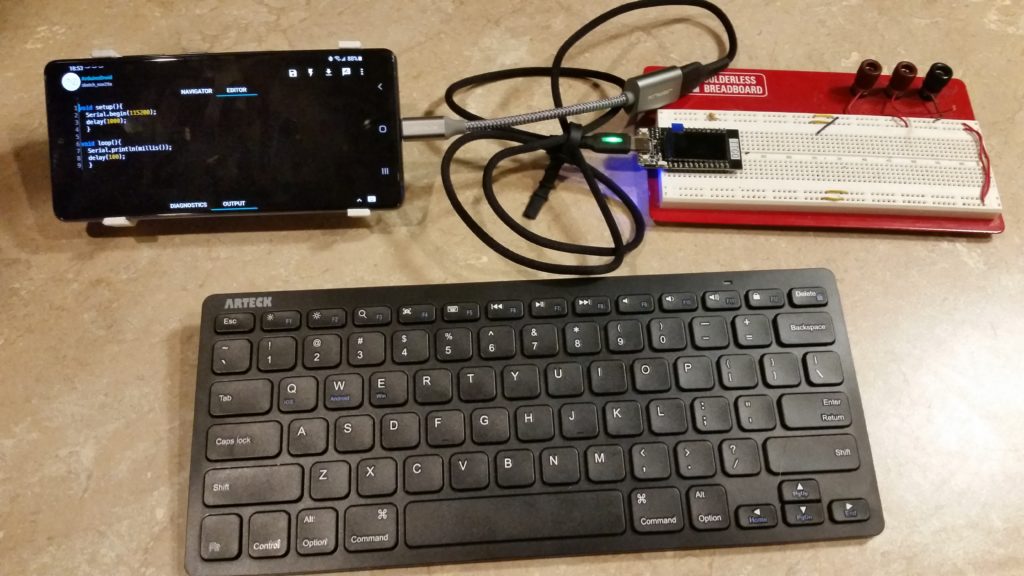Don’t look now, but that smartphone you’re carrying might be faster than your desktop. Even if not, modern smartphones are certainly capable enough to be used for many computing tasks traditionally left to desktops and laptops.
Smartphones typically have a single USB port — either MicroUSB or USB-C. For something like ten years now, these have generally all been capable of “USB On-The-Go” (USB-OTG) operations, where the smartphone switches functionality from USB device to USB controller. Plug in an inexpensive USB On-The-Go adapter, and your smartphone can access most of the same USB devices your desktop and laptop can. They can read and write flash drives, use USB keyboards and mice — and even program Arduino-compatible boards.

This is the whole setup — no PC is needed (for simple sketches, anyway.)
Even the Bluetooth keyboard is technically a luxury — if a very useful one!
I recently used a similar setup for troubleshooting a faulty speed sensor on a friend’s boat. A smartphone and Bluetooth keyboard are portable enough to use on board, where a laptop would be awkward and a desktop almost impossible to use.
I’ve started carrying a USB On-The-Go adapter with me. I figure if I’m already carrying the supercomputer, I might as well bring a USB port for it along.

